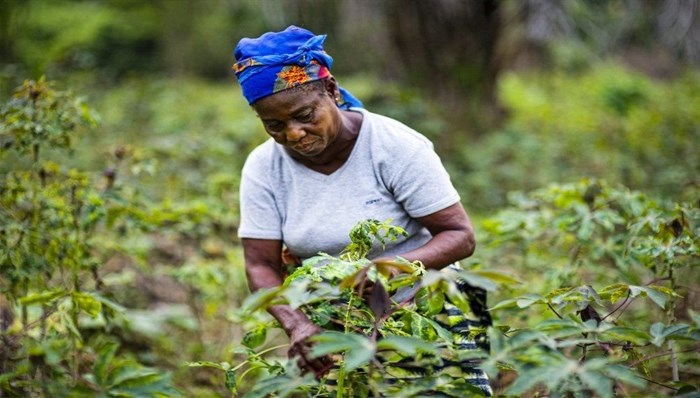Genetic make-up of destructive crop pest unravelled

Whitefly, or Bemisia tabaci, is one of the top 100 pests known to damage crops such as tomato, cassava and cotton, threatening food security in low- and middle-income countries, according to scientists.
African cassava whitefly species are responsible for vectoring [or hosting] the plant viruses that have caused two ongoing and devastating pandemics.
John Colvin, a professor of entomology and plant virus epidemiology at the Natural Resources Institute, who leads the team, says: "African cassava whitefly species are responsible for vectoring [or hosting] the plant viruses that have caused two ongoing and devastating pandemics: cassava mosaic disease and cassava brown streak disease.
"Estimates for resulting production losses in nine East and Central African countries including Kenya, Tanzania and Uganda are as high as 47% and the areas affected are continuing to expand, resulting in hunger, recurrent famines and annual losses of more than US$1.25bn."
In a study undertaken between 2014 and 2021, researchers from the ACWP collected cassava field populations of the whitefly species in India, Nigeria and Uganda. The colonies were then selectively inbred in quarantine facilities. Researchers determined the order of the chemical building blocks that make up the genetic information of the whitefly, a process called genome sequencing.
Colvin says that since the 1990s, an increase in African cassava whitefly has occurred in the East and Central African cassava growing regions.
The researchers say that whitefly is a threat to farmers globally, and causes enormous annual economic losses in vegetable, cotton and grain legume cropping systems.
"The biggest group of stakeholders affected by this problem are Sub-Saharan Africa cassava growers, who are predominantly subsistence farmers," explains Colvin.
Sharon van Brunschot, visiting fellow in agricultural entomology and plant pathology at the Natural Resources Institute, says that whitefly adults are tiny and field populations are highly heterogeneous, making it difficult to sequence and successfully assemble the genomes.
"We overcame these significant technical obstacles and these are the first high-quality genomes of B. tabaci generated using long-read sequencing technology and from highly inbred whitefly colonies," says van Brunschot.
"These findings are far-reaching in today’s context [for] creating and implementing whitefly control approaches in the immediate- medium- and long-term."
Joseph M.K. Mulema, senior scientist, research at the Centre for Agriculture and Bioscience International (CABI, the parent organisation of SciDev.Net), says that the discovery is fundamental in knowing the whole genome of the whitefly.
He adds that the findings will improve understanding of the gene-for-gene interactions that take place between the vector and the viruses it hosts, making it possible to create various management interventions.
"Some of the crops to which they transmit viruses such as cassava, sweet potato, tomato, cotton, beans, cabbage, kale and watermelon heavily support livelihoods in Sub-Saharan Africa," explains Mulema.
"Policymakers need to fast-track biosafety policies in countries where they have been developed such as Ethiopia, Ghana, Kenya, Malawi, South Africa, Tanzania, Uganda and Zambia. They need to [support] state-of-the-art molecular breeding programmes," says Mulema.
This piece was produced by SciDev.Net’s sub-Saharan Africa English desk.










